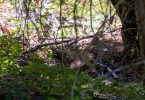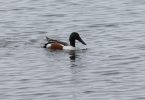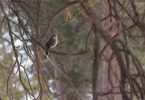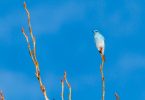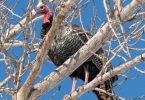Identified a adult Sharp-shinned Hawk (Accipiter striatus) from about 50 yards; took several photos to corroborate decision. This encounter was my first accipiter of the year (2/10/2020). Bird perched on a limb of a mature cottonwood. Initial impression was a medium-sized bird – like a robin on steroids, but definitely not crow sized. I had a good look with my 8 x 40 binoculars, but it was definitely not magnified in all the places important for absolute confidence. So it was not a slam dunk identification. My camera was my eyeball and cognitive backup. I didn’t expect frame filling National Geographic quality, but hoped for enough visual details to confirm identification.
Field marks to examine
Bird field guides direct one to examine head shape, cheek color, nape color, eye size, tail shape/length and leg size on a perched bird. The introductory photo for this post illustrates the bird looking straight ahead. That is not the only or best look you want to capture. The two photos embedded in the text below capture the bird looking left giving a side view of head/face. Both these photos are more valuable. They exhibit critical variables necessary for a proper identification. Let me elaborate.
Visual evidence
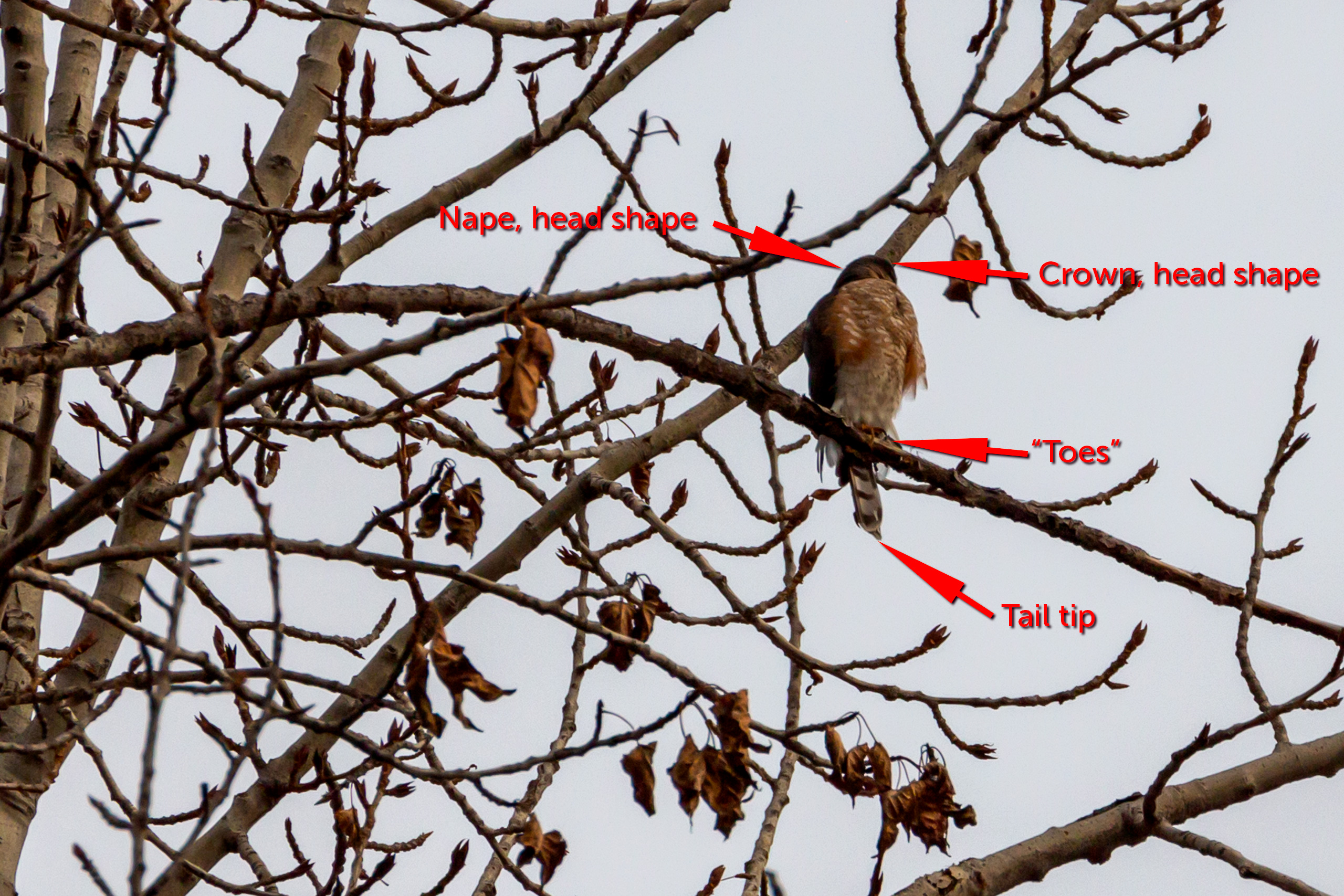
Working from the bottom to the top of bird…
- Tail length and markings in the above photo confirms this is definitely an accipiter ✓
- The tail tip is ambiguous whether it is square or rounded, a key mark for separating sharp-shinned from Cooper’s hawk (Accipiter cooperii). That’s okay, relying on a single field mark is not a good birding practice.
- The “toes” in the photo appear very narrow in diameter and slight; this is a sharp-shinned feature ✓
- The head (crown and nape) is smoothly rounded in entirety; there is no hint of blockiness or squareness. Field mark indicating sharp-shinned ✓
- Both the crown and nape are also dark colored, another sharp-shin field mark ✓
Below is a second head look with the bird looking in a slightly different direction.
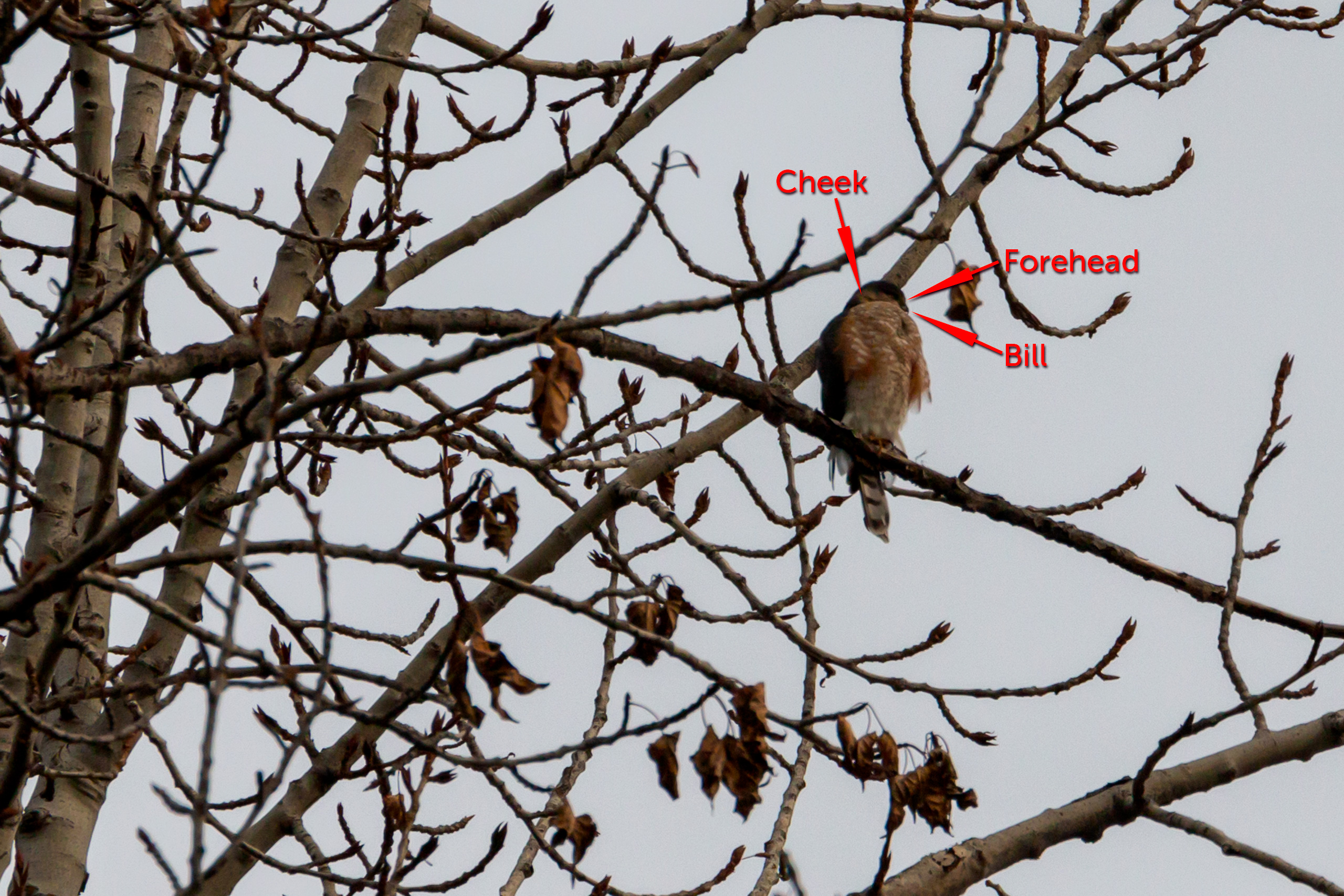
- Note the obvious orange cheek patch that does not wrap around the nape. The nape is distinctly dark offsetting the orange. Adult female Cooper’s hawk has orange cheek, but bordered by a light colored and not a dark nape. Score this mark indicative of sharp-shinned ✓
- Zoom the above photo and notice the steep forehead. It is not gradually sloped as is usual with a Cooper’s hawk. This is a subtle sharp-shinned detail more noticed on a photo than in real time ✓
- No mention of bill size in field guides or publications comparing species. Suffice it to say the bill is small and dainty.
Summary
The two photos distinctly reveal details for five of seven field marks essential to confidently identifying this bird as a Sharp-shinned Hawk. I got lucky in this circumstance with photo documentation – camera in hand and bird cooperated. It would be great if all birding observations could be photographed and corroborated. Unfortunately, lugging a 70-300mm lens on a DSLR crop sensor body around your neck with binocular is not entirely comfortable and practical. May your intuition guide you in when, where to carry a camera in hand. Good birding 🙂

